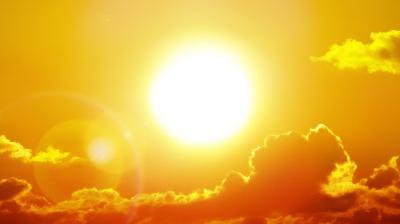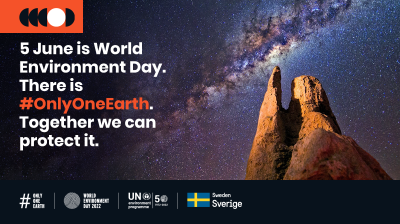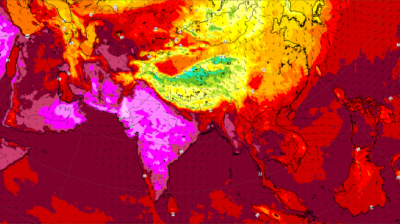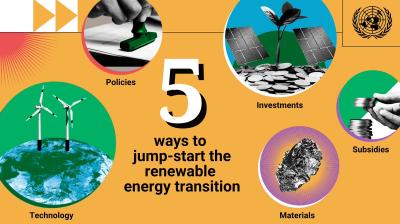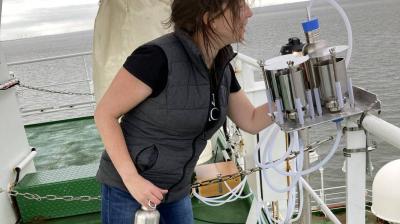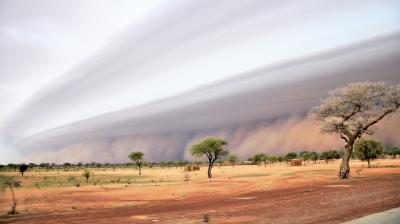WMO acts on sand and dust storms
Sand and dust storms are meteorological phenomena and a natural hazard and occur in arid and semi-arid regions.
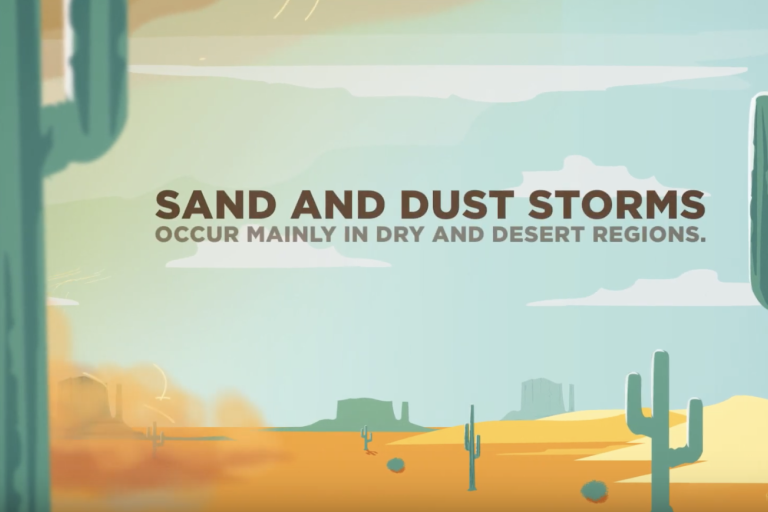
Sand and dust storms are meteorological phenomena, occurring in arid and semi-arid regions. They are an essential element of the Earth’s natural processes, but are also caused in part by human-induced drivers like unsustainable land management and water use, and indirectly also by climate change. Sand and dust storms seriously threaten human health, agriculture, aviation, ground transportation, the output of solar power plants, air quality, infrastructure and industry, as well as aquatic and terrestrial ecological systems. At the same time, they also supply nutrients to ocean ecosystems.
A new WMO Airborne Dust Bulletin gives details about major sand and dust storms in 2018 and its anomaly relative to the climatologically mean values (1981-2010), as well as the observational and forecast results of representative severe sand and dust storms around the world during the year of 2018. It outlines also WMO activities to strengthen forecasts and early warnings to reduce the associated risk to the health of people, the environment and economies.
The Airborne Dust Bulletin and an accompanying explanatory video on sand and dust storms was published to inform action at the quadrennial World Meteorological Congress from 3 to 14 June.
The World Meteorological Congress, which is WMO’s top decision-making body, committed WMO to continued action to improve early warnings and forecasts of sand and dust storms. It stressed the need for national, regional and global action plans to increase resilience to sand and dust storms and called for improved collaboration between different UN Agencies, national organisations and stakeholders to tackle the issue.
“There are undeniable interlinkages between extreme weather-related disasters, drought, desertification, air pollution, sand movement, and dust storms,” according to a Congress resolution. “Sand and dust storms adversely affect the state of the environment, health, agriculture, socioeconomic well-being, and livelihood of large populations on Earth, particularly those living on and around a dry belt,” it said.
WMO is committed to working with all relevant United Nations entities, in particular the UN Environment Programme, the United Nations Convention to Combat Desertification, and the World Health Organization to promote a coordinated approach to improve resilience to the impacts of sand and dust storms. The main WMO contribution to this important and complex task of combating sand and dust storms is focusing on research, monitoring and forecasting of sand and dust storms.
In this regard WMO supports the World Day to Combat Desertification, which takes place every 17 June.
There are frequent sand and dust storms in Northern Africa, Middle East and Europe, Arabian Peninsula, Central Asia, northern India, northern, north-western China, southern Mongolia and adjacent Asian countries; and in desert regions of Australia and the USA.
Given that sand and dust storms are a transboundary hazard, they require international coordination and policies. WMO’s Sand and Dust Storm Warning Advisory and Assessment System (SDS-WAS) was therefore launched in 2007 as a joint cross-cutting project of the World Weather Research Program (WWRP) and the Global Atmosphere Watch (GAW) Program with the mission to enhance the ability of countries to deliver timely and high-quality sand and dust storm forecasts, observations, information and knowledge to users through an international partnership of research and operational communities.
More than 20 organizations currently provide daily global or regional dust forecasts in different geographic regions, including 7 global models and more than 15 regional models contributing to SDS-WAS. It integrates research and user communities (e.g., from the health, energy, transport, aeronautical, and agricultural sectors).
Presently, there are three Regional Nodes of SDS-WAS: the Northern Africa-Middle East-Europe Node with its center, hosted by Spain, the Asian Node with its center, hosted by China, and the Pan-American Node with its center, hosted by Barbados and the USA.
The WMO Congress resolution urged Members to promote international cooperation to combat sand and dust storms through the exchange of knowledge, experiences, best practices and by launching training courses; and to enhance capacity building and technical assistance for combating sand and dust storms and to support the implementation of national, regional, and global action plans of affected countries.
WMO will oversee and monitor the progress of the implementation of early warnings of sand and dust storms as part of WMO’s multi-hazard early warning system.



